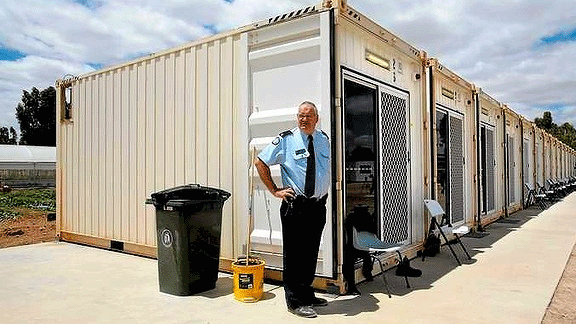Bitter fruit of law and order agenda

Prisoner numbers are increasing at a rate almost three times faster than the general population, according to Australian Bureau of Statistics figures.
“You can’t build prisons fast enough at the moment to deal with the incoming prisoners”, says Don Weatherburn, director of the NSW Bureau of Crime Statistics.
Prisons in almost all states are understaffed and over capacity. Basic human rights and safety standards have been sacrificed. Health services and support programs have been starved and are unable to keep up with demand. Predictably, there has been an increase in violent attacks within prisons.
The overcrowding is a result of the nationwide strengthening of sentencing laws.
In Victoria, sweeping law and order “reforms” have resulted in the prisoner population increasing 14 percent over the last year – that’s the highest increase in the country.
“The Victorian government’s change in policy”, wrote ABC journalist Sean Rubinsztein-Dunlop in July, “can be traced back to the public outcry over the brutal murder of Jill Meagher in 2012, which sparked a tightening of parole, sentencing and bail laws”.
Announcing the changes last year, corrections minister Edward O’Donohue stated in a departmental media release: “These sweeping changes to Victoria’s parole system form part of the strengthening of law and order.”
Police have also been given more power to enforce the new laws. O’Donohue added that the reforms would include an additional 1,700 police and 940 protective service officers to patrol railway stations and “the introduction of tougher sentencing”.
Various short term measures have been implemented by the Victorian government to deal with the increase in prisoner numbers, including double bunking, which has resulted in 22 percent more beds than infrastructure can currently support. One measure in particular has attracted widespread criticism – the use of shipping containers to house inmates.
Emma King from the Victorian Council of Social Services comments, “Forty-six per cent of people discharged from prison report that they’ve been diagnosed with a mental health issue. I would really question what impact putting three people within a shipping container might do to exacerbate those issues.”
Similarly in New South Wales, public moral outrage about street violence was stoked prior to the implementation of stricter bail conditions and mandatory sentencing laws. Despite the overall crime rate going down, police are looking to arrest more people on minor charges and to keep them in prison for longer.
“The pressure is on to try and look tough, and that results generally in tougher policies”, Weatherburn told the ABC last month. “That’s what the public want, that’s what the shock jocks want, that’s what the tabloid media tends to expect.”
Panic about street crime, often racially coded, and the law and order agenda have been staples of the conservative playbook. The political right cynically uses any opportunity to shore up its voting base and provide cover for furthering its neoliberal agenda.
As the situation in Victoria shows, the Jill Meagher case was particularly effective. Socialist Alternative’s Louise O’Shea made this point at the time: “Moral panics about crime or violence between individuals, in particular the need to protect white women and children from harm, are almost always used by governments to promote reactionary ideas and to justify attacks on people’s rights.”
Her point, unfortunately, has been vindicated. Ironically, women – particularly Aboriginal women – are now the fastest growing group of prisoners in Australia.
The importance of recognising and rejecting the law and order agenda has never been so clear.